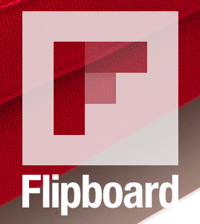

Amid the big news of the News Corp. split, The New York Times announced its deal with Flipboard. Then, the next day, The Wall Street Journal reported its own deal with Pulse. It looked like Tablet Aggregator Wars, with the two big head-to-head print national news companies going head to head.
In fact, there’s a lot more here than first meets the eye. Get beneath the surface, and we find two very different approaches to selling news content away from publishers’ own sites. But you can expect these two new approaches — each a major departure from business as recently usual — to keep growing together in the year ahead.
The deals:
The deals seemed out of the blue, but both represent a maturation in digital circulation thinking. We’re moving beyond Paywalls 1.0, to a more nuanced world of digital circulation. The WSJ/Pulse deal took about four months to get done, while NYT/Flipboard took longer. We could say, though, that both deals took more than 15 years.
Why? The idea that news companies could get paid as someone read their valuable, and expensive-to-produce, news content on an aggregator sites seemed a distant dream. First, of course, news companies had to make the critical decision to charge for digital access to their content, a movement now sweeping the globe. The enduring principle, just re-learned by news companies in the past three years: If money isn’t flowing, you can’t get a share of it. That’s a corollary of this truism: If you don’t charge them, they won’t pay you.
Now digital circulation has opened up whole new horizons, not just for news companies, but, surprisingly, for the aggregators like Flipboard and Pulse. These companies started up with germs of ideas that the tablet offered new ways for readers to enjoy reading. Neither had much of an idea of how to make money, and both are still in the early stages of proving out business models. They may pass the way of tablet aggregator Zite, acquired by CNN, or emerge as bigger, independent companies. Now, though, owing to money moving where it hadn’t before, it’s not only the Journal and the Times can figure out new ways to money — so can the startups.
The newsonomics of these deals are intriguing. In a way, they’re marvelously simple, so let’s call this the newsonomics of the only metric that matters. Out of these partnerships, we can see this new blinding reality: the metric that matters most is dollars (or pounds, euro, yen or kroner). Both deals allow the news companies to get more dollars for reading.
For almost two decades, news companies have counted so many things: first unique visitors and pageviews, then conversion rates from Google and now Facebook and a myriad of other sites. They’ve tried to compute how useful and valuable differing kinds of referral content really is: Does a Facebook referral really read more pages, once they hit a news site, than a Google referral? How likely is a referral from Techcrunch or HuffPo or ESPN to actually buy one of the new digital subscriptions? What’s the percentage of those that register on a site coming from Twitter as opposed to LinkedIn?
The permutations are endless. The Financial Times has fairly won its reputation for propensity modeling excellence — deciding which of these many metrics, tossed into the mixmaster of its smart analytics department, makes the most difference in driving the FT’s business forward.
Yet all these calculations — this search for numbers that matter in building a big digital business — can be summed up in the universal language of exchange: money. All these metrics remain vital to understanding the new landscape, but the discipline of seeing how much actual new currency can be generated by deals is the single greatest metric. All those other metrics just serve that one.
So these deals are about reader revenue (“The newsonomics of majority reader revenue”), and maximizing it. They begin to put a new face on all the talk of news everywhere and anywhere, terms that, like “digital first,” are getting lots of lip service but wildly uneven execution.
 As the Times’ Denise Warren pointed out, 20 percent of current Times digital subscribers reported in a survey that they used aggregation apps like Flipboard to read news. That meant extending the Times’ all-access strategy to enable subscriber reading apart from The New York Times’ own products. For the Journal, news anywhere means not only serving WSJ subscribers on the evolving multiple screens of our lives, but also finding new readers everywhere and anywhere. Its first strategy with Pulse is finding new paying readers, so it’s sampling, with its three less-than-full-access products.
As the Times’ Denise Warren pointed out, 20 percent of current Times digital subscribers reported in a survey that they used aggregation apps like Flipboard to read news. That meant extending the Times’ all-access strategy to enable subscriber reading apart from The New York Times’ own products. For the Journal, news anywhere means not only serving WSJ subscribers on the evolving multiple screens of our lives, but also finding new readers everywhere and anywhere. Its first strategy with Pulse is finding new paying readers, so it’s sampling, with its three less-than-full-access products.
Two different strategies. Two different tablet aggregators. Yet, expect these two strategies to come together, and soon.
Expect The Wall Street Journal to start offering off-site — on Pulse and a couple of more sites — access to full Journal content for its subscribers. Expect the Times to sample for new readers, similarly to how the Journal is now doing it, with differing pricepoints for subsets of content. Expect the Financial Times, a company that has used parallel third-party distribution in its B2B business, to join in the testing as well. Expect magazine publishers to adapt the strategy for their own niche content, and maybe large, regional newspapers as well.
Further, expect Facebook, as it figures out how best to sell media, to become a middleman here as well. It’s only logical for a company that is making possible “social reading.”
These strategies are a logical extension of digital circulation. It’s a recognition that the relationship between a publisher and a reader, while paramount, can be fulfilled on sites or apps other than a publisher’s. We’ve come to think of all-access as meaning multi-device access — smartphone, tablet, desktop, and laptop, as well as print. These deals extend all-access to the reading experiences — the magazine panache of a Flipboard or the elegant conveyor belt of Pulse — as well. This extension of all-access is significant. Where today 20 percent or so of Times readers may do a lot of of news reading on aggregator tablet sites, we can easily see a world in five years in which 80 percent of Times subscribers are. Who know what kinds of reading experiences — new kinds of tablets, new presentation styles — will be available? What’s important to the Times and all news companies is maintaining a branded, paid news experience.
As important to the all-access subscription business as these deals may be, the Journal’s deal with Pulse is potentially more interesting.
It breaks the one-product, one-price mold, and leads us into the future of many news products at many price points (“The newsonomics of 100 products a year”). It fishes for that elusive “will they pay for it” audience — people younger than 50. And it may be as much about growth as retention of current digital subscribers.
Pulse matched up its most-used topics — technology and politics — with WSJ strengths, says Dmitry Shevelenko, head of monetization for Pulse, and more topical WSJ packages will follow. Some of those 99-cent-plus buyers will upgrade to a full Journal subscription, currently going for $260 a year. When they do it, Pulse will get a one-time commission. The Journal deal is a model for Pulse: “You can imagine a catalog of premium sources,” he says.
For the Journal, it’s about “putting our toe in the water,” says Alisa Bowen, just promoted to chief product officer at Dow Jones. “We’re hoping we acquire younger readers.”
Currently, Pulse is using Apple to do its e-commerce of the Journal 99-cent monthly payments, with the small revenue splits among Apple (30 percent), the Journal, and Pulse. The simple checkout experience (because Apple iPad users can one-click their way to purchase, with a credit card already in the system) and the simple 99-cent pricing is key to making payments work, says Shevelenko.
As important as reader revenue is to these experiments, ad revenue plays a part as well. There’s a mix-and-match, we-can-sell or you-can-sell-and-we’ll-share-revenue approach to ad sales on these tablet apps going on. In the end, it’s the same two metrics, advertising dollars and circulation dollars, and how many of each can be generated through these off-site relationships. Those are the metrics that will matter and will determine how much news anywhere grows in meaning to news consumers.
Says Shevelenko, describing Pulse’s strategy, “Both [ad and circ] revenue models are critical to the future sustainability of news, but both are in desperate need of innovation and simplification. The challenge is not about picking the right side — it’s about being bold enough to change how ads look and feel (moving away from IAB units to native experiences) and to change how subscriptions are priced and consumed (even at the risk of cannabalizing existing paywall structures). This is the real story and we’d love to participate in a substantive exploration of it.”